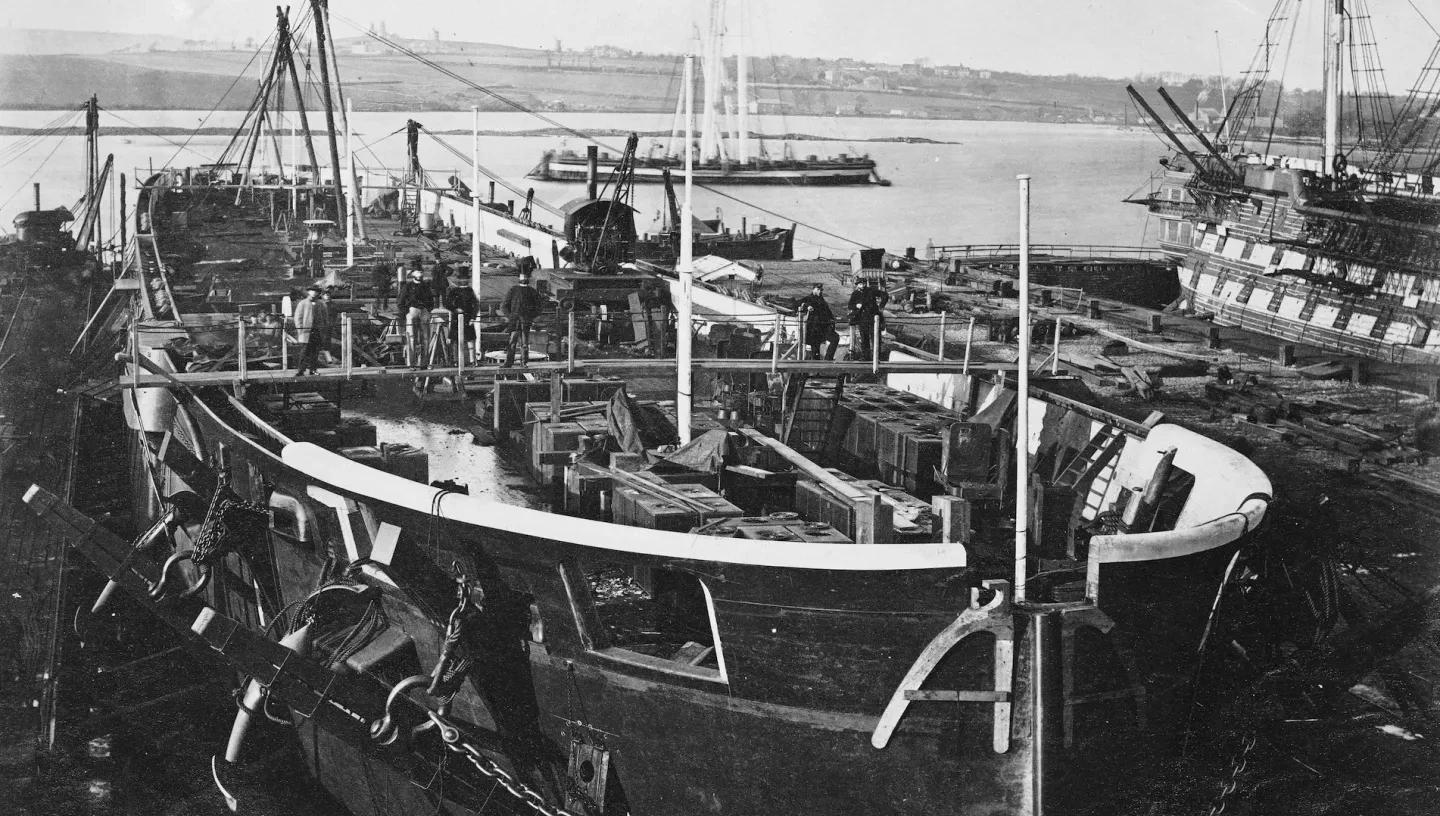
The introduction of steam power in the 19th century revolutionised the shipping industry and made Britain a world-leader in shipbuilding.
In the 1800s, much of Britain’s wealth relied on her merchant ships, which carried goods and people across the empire. British ships were among the best in the world and the use of steam for propelling them through the water was one of their advantages. By the end of the century, Britain was a world leader in steamship production.
When did the first steamships appear in Britain?
In 1794, the Earl of Stanhope built a steam-powered vessel named the Kent. This was an experimental ship which, though not successful itself, showcased how a steamship could work. In 1801, a small steamer called the Charlotte Dundas ran trials on the Forth and Clyde Canal near Glasgow.
By the time Queen Victoria came to the throne in 1837, steam-powered vessels were in use across the country. There was even a regular steamship service across the North Atlantic by Brunel's Great Western.
How did steamships develop?
Paddle-wheels in steam ships had several problems. Their main disadvantage was that in rough seas they could become submerged or rise out of the water altogether, harming the engines.
During the 1840s, screw propellers replaced paddle-wheels, and engines became larger. Thankfully, iron and steel soon replaced wooden ships, which were prone to leaks when fitted with large engines.
Were sail and steam in competition?
Throughout the 19th century both types of vessel advanced in technology and and efficiency. By 1870, sailing ships could be worked with far fewer men than those of 1800 and offered increased space for goods. This was important in an age when trade throughout the world was growing, especially in such bulky goods as jute and rice from India and wool from Australia.
On long ocean-going runs, ship owners chose wooden and later iron sailing ships, called square-riggers, rather than steamships. Wind power was free, while coal for engines was expensive.
What part did steam play in the Royal Navy in the 19th century?
The Battle of Navarino in 1827 was the last to be fought by the Royal Navy entirely with sailing ships. At first, however, the navy only used steamships for certain tasks. Navy commanders thought that engines and paddle-wheels were too unreliable to be used in the fighting ships. Also, the paddle-wheel and its protective cover did not allow a full broadside of cannon to be carried and were vulnerable to the enemies’ shot.
What effect did steamships have on sailors’s lives?
A whole new type of seafarer appeared. The traditional skills of working sails and ropes were eventually replaced by the craft of the ‘marine engineer’. Working the ships’ engines was dirty, hot, noisy and wet, as well as dangerous. Stokers had to keep the furnaces fed with coal, while greasers kept the machinery parts well oiled.
When did steamships take over the long distance routes?
From the 1870s, a new and much more efficient engine was introduced, called the triple expansion engine. It allowed steam to be used three times before being turned back by the condenser into fresh water for the boilers. The boilers themselves were improved in design to allow higher steam pressures. This meant the engines could propel the ship for longer distances before recoalling, making them suitable for long distance routes.